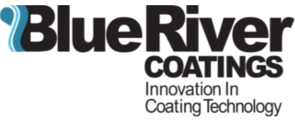Hydro Liquid Mask
Product Overview
HLM-1000
Hydro Liquid Mask is a one component, anionic polymer protective and peelable coating.
Download Data Sheet
Download Safety Sheet
Benefits
Hydro Liquid Mask can be applied to architectural components like door and window frames to protect the finished surface during construction. It can also be applied to spray booths as an easily removed and reapplied surface.
Features
- Easily peelable
- Excellent block resistance
- Excellent flexibility and toughness
- Ultra-low VOC
- Good exterior durability
Finish
- Color: Clear Coat
Spread Rate
- Theoretical Coverage: 715 sq. ft. per gallon @ 1 mil DFT
- Recommended Coverage: 130 sq. ft. per gallon @ 5-6 mil DFT
Substrates
- Nonporous compatible substrates*
* Test substrate for compatibility
Specifications
- Binder Type: Anionic Polymer Dispersion
- Volume Solids: 45 ± 1%
- Weight Solids: 42 ± 1%
- Weight per Gallon: 8.8 ± 0.4 lb
- Flash Point: TBD
- VOC, Coating: 0 g/L, EPA Method 24
- Shelf Life: 12 months, unopened
Performance Data
- Elongation at Break: 550%
- Ultimate Tensile Strength: 30 N/mm2
Surface Preparation
Ensure the substrate is clean and dry before applying Hydro Liquid Mask. For best results, remove loose dirt and debris with high pressure air.
Application Methods
Stir the contents before use. Never shake or mix under high agitation. Do not thin or dilute. Hydro Liquid Mask can be sprayed or rolled onto the substrate.
- Spraying: Use an airless sprayer of an appropriate size for the project. For best results, apply with a 517 or larger tip to the recommended film thickness. Apply uniform coats as needed to achieve a total WFT of 10-12 mils.
- Brushing: Use a minimum 3/8 nap wool or microfiber roller. Apply uniform coats as needed to achieve a total WFT of 10-12 mils.
Dry Times
Cure time for Hydro Liquid Mask is dependent on temperature, humidity, and air flow. To decrease dry time, use a fan to add air flow.
Cure Conditions:
75ºF / 24ºC @ 50% RH
Recoat:
≤ 10 days
Dry to Handle:
20 minutes
Pack Time*:
1 hour
* keep coated surfaces separated by packing materials
Clean-Up
While coating is wet, water may be used for cleaning. After the coating dries, solvents may be required for clean up.
